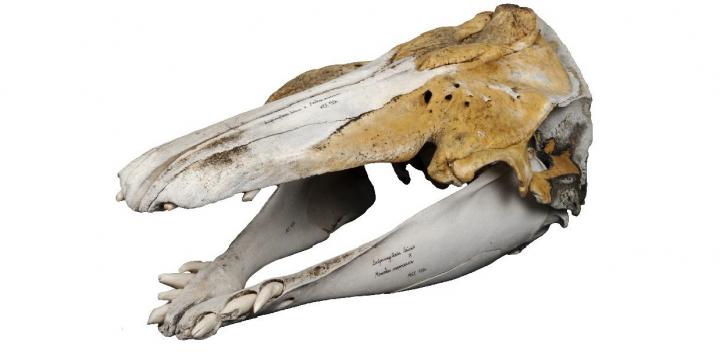The “wholphin” is the nickname for a hybrid born as a result of some unlikely canoodling between different species of cetacean, most often a bottlenose dolphin and a false killer whale. However, this isn’t the only known example of interspecies mingling that’s been documented among this infraorder of animals. From the narluga to dolphin hybrids, a handful of examples of cetacean hybridization have been documented in recent decades.
The first known wholphin was born in a Tokyo SeaWorld in 1981, but it died after just 200 days. In 1985, another young female hybrid called Kekaimalu was born after an “unplanned union” between a male false killer whale, called I`anui, and a female Atlantic bottlenose dolphin, called Punahele.
“The training staff was suspicious as soon as the baby was born. She was darker than the other dolphins, and her nose looked like it was chopped off,” John Blanchard, a lecturer at the Tokyo SeaWorld park, told the Chicago Tribune in 1986.
This wholphin was not technically a dolphin-whale hybrid because the false killer whale is, in fact, a dolphin, despite its name. However, they are members of two distinct species, making Kekaimalu an example of a true hybrid.
The birth of cetacean hybrids was especially surprising given the size difference between the two parent species: common bottlenose dolphins are typically 2 meters (6.5 feet) long while a male false killer whale can be over 5 meters (16.4 feet) long. Evidently, the creation of this hybrid offspring must have required some impressive physical feats.
That said, the two species do appear to have a close bond both inside and outside of captivity. Researchers have previously reported that bottlenose dolphins and false killer whales are frequently seen hanging out and foraging together in the wild.

Narluga: Scientists have genetically analyzed this skull and found it belonged to a beluga-narwhal hybrid.
Image credit: Mikkel Høegh Post
It’s often said that two different species cannot interbreed and create fertile offspring, but that’s not always the case. If two species are relatively closely related and they share the same number of chromosomes then it can be occasionally possible for them to interbreed and produce fertile offspring. For instance, dogs and wolves both possess 78 chromosomes arranged in 39 pairs, allowing them to successfully interbreed with fewer hitches.
The same is true with bottlenose dolphins and a false killer whale, which both have 44 chromosomes. Case in point, Kekaimalu was fertile, reportedly mating with at least two male bottlenose dolphins and giving birth to at least three offspring.
Beyond the case of Kekaimalu, scientists have documented a handful of hybrids produced by different species of cetaceans, the infraorder of aquatic mammals that includes whales, dolphins, and porpoises.
In 2018, researchers spotted a new hybrid dolphin in the waters of Hawaii, believed to be half rough-toothed dolphin and half melon-headed dolphin. Commenting on the discovery, biologist Robin Baird told HuffPost: “I wouldn’t be surprised if there are more hybrids between the two species – they do associate quite regularly.”
The following year, another team of scientists at the Natural History Museum of Denmark studied a whale skull they found on the roof of an Inuit toolshed in West Greenland’s Disko Bay. Genetic analysis revealed that the specimen was 54 percent beluga whale and 46 percent narwhal. A narluga, some might say.
Cetaceans aren’t the only creatures making hybrids either – wait until you see the beefalo, or this dog-fox combo.
Source Link: Meet The Wholphin, The Unlikely Hybrid Of Intermingling Cetaceans